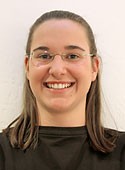Earlier this month, the official newspaper of the Vatican weighed in on the debate over intelligent design in the classroom by supporting the claims of those who have said that it is not a scientific theory and should not be taught as one.
The article appeared in the newspaper L’Osservatore Romano in a special section meant to address the controversial topic, which has been widely publicized in America in recent years.
As a theory, intelligent design probably doesn’t deserve all the criticism that it draws, but the decision to prevent it from being taught in public science classrooms is a good one.
In fact, the only reason that this issue has survived in the public so long is that it has been hijacked by people on both sides with an agenda to push.
The Washington Post reprinted portions of the article by Fiorenzo Facchini, a professor of evolutionary biology at the University of Bologna.
Facchini wrote that intelligent design “”doesn’t belong to science, and the pretext that it be taught as a scientific theory alongside Darwin’s explanation is unjustified.””
He went on to say that the issue “”only creates confusion between the scientific and philosophical and religious planes.””
But the ultimate reason for the attention intelligent design receives in the U.S. is that it provides an opportunity for people with opposite agendas to go head-to-head.
Contrary to what some opponents of intelligent design might like to believe, the theory wasn’t concocted by a bunch of angry Christians hoping to stop evolution from being taught as the dominant explanation for life on earth.
In its most basic form, the theory states that certain elements of the universe, such as the often-cited human eye, are so complex that it is likely that they are the result of the work of an intelligent creator.
Thomas Lindell, a molecular and cellular biology professor who teaches the course Science and Theology, said that the clever thing about intelligent design is that it “”implies an intelligent designer, but it does not under any circumstances describe the possibility that that designer could be God.””
Intelligent design has become the central battleground for the debate about religion and its place in American classrooms.
A problem has arisen from the fact that the concept has been hijacked by those who hope to weaken evolution’s standing as a scientific theory and who have advocated the consideration of intelligent design alongside evolution in public science classes as a means to give credence to their own religious beliefs.
Many people like Lindell object to that idea because, as he put it, “”Intelligent design is not science, and it is not science because it cannot be tested. Therefore, it should not be taught in public science classrooms, period.””
However, this straightforward view about why intelligent design does not belong in high school science classes has also been co-opted by those hoping to push an agenda of absolute separation of church and state, who assert that the theory is merely “”creationism repackaged.””
Still others disagree about the appropriate forum for the discussion. Political science sophomore David Reece said, “”All topics (that) are not obscene in nature should be available for discussion in the classroom.”” In his view, students and teachers should not be banned from discussing intelligent design and its relationship to scientific theories like natural selection.
So what began as an improvable but not wholly unreasonable belief about the nature of the universe has become the central battleground for the debate about religion and its place in American classrooms.
Lindell and Facchini are correct to say a science class is not the appropriate place to discuss intelligent design, but that in no way justifies attempts by the idea’s opponents to label the theory and those who subscribe to it, or even consider it, as fools.
No one is served when theories are seized and manipulated by people with an agenda to push – and that applies to both sides.
Michael Huston is a political science and philosophy junior. He can be reached at letters@wildcat.arizona.edu.









